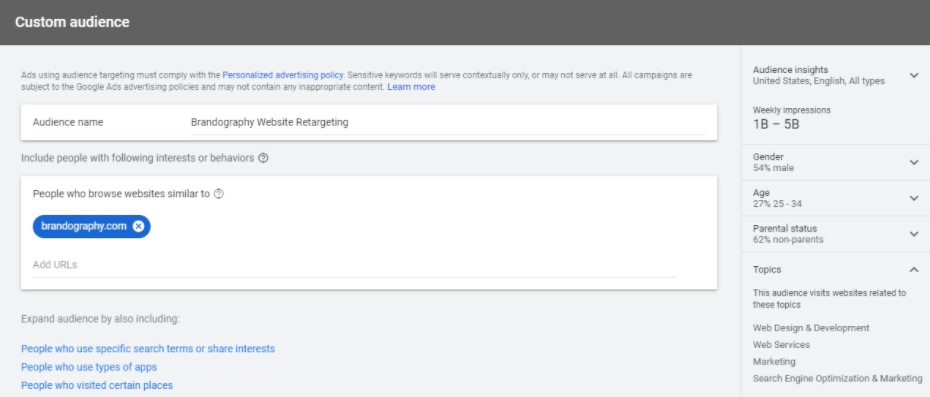You’ve probably heard the phrase competitor retargeting but had questions about whether or not this marketing tactic actually works, and if so, how can you start using it to benefit your business.
The concept of competitor retargeting would allow you to target users who have specifically visited your competitors’ websites. And for years, people have become increasingly interested in this topic. After all, if you’re a new organization trying to build a brand and expand your customer base, it’s a no brainer that the fastest way to get noticed is to get in front of your competition’s customers, right?
So, the question you might start asking yourself: does this tactic really work? Can an organization “specifically” target ads to show people who have specifically been on a website of one of its competitors?
There are many people who think it’s possible, and it has been the topic of debate more than once among my team here at Brandography. We believe the main reason agencies believe true “competitor retargeting” exists is due primarily to Google’s Custom Affinity Audiences.
 Screenshot from Google Ads
Screenshot from Google Ads
Take a look at our screenshot above. Within “custom audiences”, there is a selection titled “People who browse websites similar to”. As you can see here, we entered “Brandography,” a digital marketing agency in the Twin Cities.
Now, we already know that Google’s web crawlers do a great job of reviewing our website and breaking it out into its top services: web design and development, marketing, search engine optimization (SEO), etc.
So, by entering in our own website, we’re able to create an audience that targets users searching for these specific services, thus creating what’s known as a “Custom Affinity Audience.”
But Is This a True Retargeting Audience?
Let’s break this down carefully. Firstly, Google’s assessment of the number of weekly impressions we would receive is somewhere between 1-5 billion. So, although our brand is recognizable, we would have to attract hundreds of thousands of visitors every month in order to deliver over a billion impressions in a single week.
Secondly, upon contacting Google for clarification of this feature, they told us that although this feature does try to show impressions from visitors to the designated website, they will fill in additional visitors from the topics listed in this custom audience. They try to display to browsers who visits this site first, but if the audience is too low, they will fill in the gaps with visitors from the topics listed in the custom audience.
So, what does this mean for your campaign if you’re using Google’s custom audiences to try to target visitors from your competitor’s website? Here’s what we uncovered.
Testing This Theory
Our team ran a test against two separate campaigns for approximately 12 hours. Both campaigns had the same ad copy, images, text, location targeting, bid strategy (i.e., maximize clicks) and budget. The only difference between the two campaigns was the audiences.
- Our first audience targeted a true retargeting audience, so anyone who has visited our website in the last 30 days.
- The second audience targeted a custom audience using only our brand’s URL (as seen above).
The Results
After 12 hours, the custom audience delivered almost 25x the number of impressions compared to our true retargeting list. We believe this would have been much more if our budget had been bigger, as this test blew through our budget in the first hour after initialization. In comparison, the true retargeting campaigns did not spend enough to meet our daily budget after completing the test.
If the custom audience’s “competitor retargeting” audience was a true retargeting audience, it would have delivered results more aligned with what we saw with our true retargeting list.
So, Does True Competitor Retargeting Exist?
Google does not currently offer a true competitor retargeting campaign option. That is not to say this audience is not well targeted, however. Because of custom intent audiences, advertisers are able to target a much larger, custom intent-based audience with targeting that truly gets your ads in front of an engaged audience.
 Nevertheless, the only true way to run a competitor retargeting campaign is if you were to have your tracking code on their website.
Nevertheless, the only true way to run a competitor retargeting campaign is if you were to have your tracking code on their website.
Need help with your PPC campaigns or marketing strategy for 2021? Contact our team to learn how we can help!
Article written by Brandon Kasper, Brandography’s senior manager of paid media.



